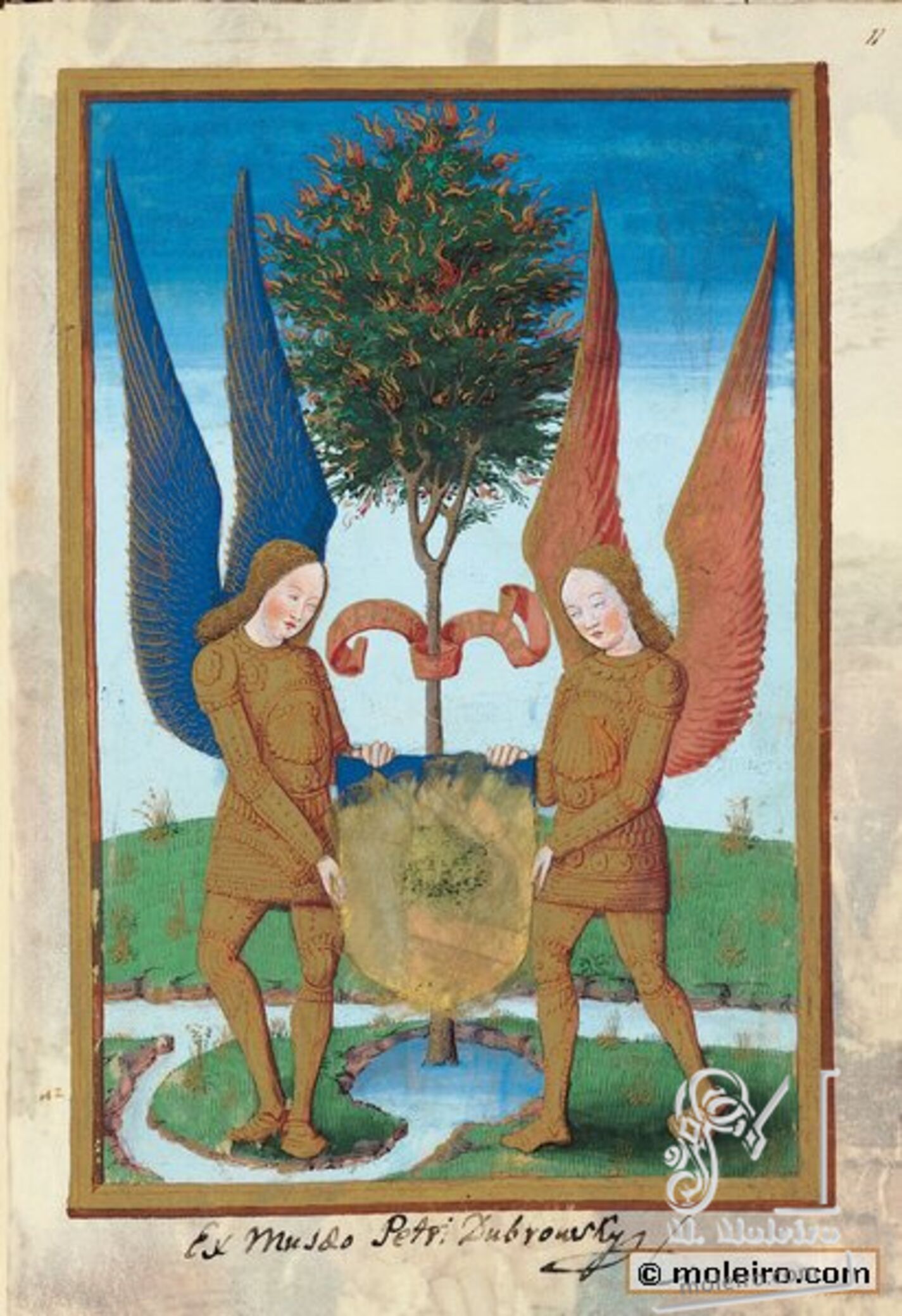This full-page illustration depicts two angels set inside a frame of plain, imitation wood strips and dressed in gold military attire, holding a coat of arms whose elements are in very poor condition. Behind the two supporters stands a tree with a blazing crown and a ribbon around its trunk that reads “A Prier/MeLie”. The scene takes place in a simple landscape with a meadow full of golden bushes and a stream of water with a meandering tributary from which the tree springs.
It is not at all unusual to find angels bearing coats of arms in paintings and sculptures. The military appearance of the angels in the Book of Hours of Louis of Orléans, one with blue wings and the other with red, is however unusual: the breastplate of their armour features a sort of scallop. Likewise, their clothing298 and the function they are fulfilling are very similar to those of the angels in the bottom margin of the Statuts de l’ordre de Saint-Michel dated 1470 (Paris, Bibliothèque nationale de France, ms. fr. 19819, f. 1r),a work attributed to Jean Fouquet. Similarly, the Archangel Michael wears armour and a breastplate that is decorated with three shells in the Hours of Louis de Laval (f. 335), whose owner, as we know, was one of the first members of the Order of Saint-Michel.
As we pointed out above, the coat of arms they are holding is in very poor condition. The arms that were originally present have been scratched out except at the top where a thin strip of azure can be seen with a golden element on the top left-hand side. Part of the wall and the grass in the Garden of Eden and also Adam’s feet on the verso can be seen through the rest of the coat of arms. So normally speaking it would be difficult to discover the identity of the first owner of the book of hours. However, the motto written on the ribbon wound around the trunk of the tree with the blazing crown provides us with a clue. According to F. Avril, the first owner was an important figure from Languedoc, whose emblem, identical to the one described above, appears in a book of hours, use of Rome (Cambridge, Fitzwilliam Museum, ms. 94) consisting of a coat of arms – which can still be discerned despite having been painted over – featuring the following elements: gold on the vert tree, the azure crown of the gules rose accompanied by two gold spikes. These same arms appear again in an early 15th century book of hours from Avignon probably completed around 1490 in Toulouse (San Marino, Huntington Library, HM. 1104).
It is significant that the entire front page of this book of hours is filled by the coat of arms and the emblem accompanying it. These permanent and distinctive tokens of lineage symbolise everything that a family represents, whether these elements have been earned deservingly or been invented. The family becomes identified with them and in fact they become part of its heritage, memorials of a house that has achieved certain military, diplomatic or religious feats that they are proud of and must bequeath to posterity.
